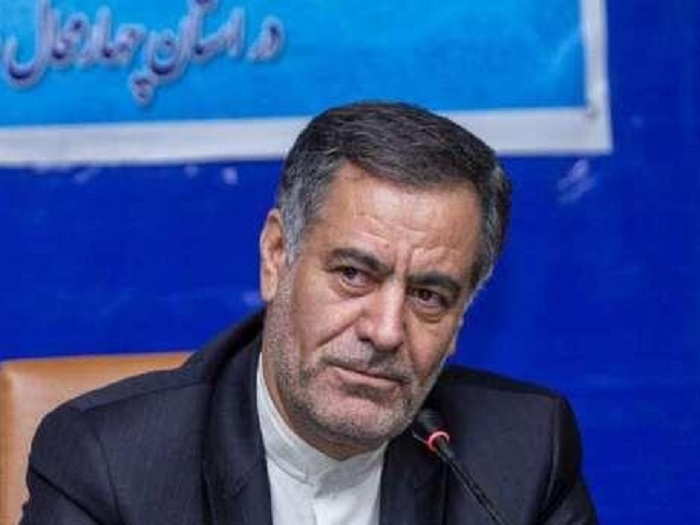Glamorous but stagnant mines!

The mountainous paths, full of ups and downs, reach the treasures that lie in the heart of this ecosystem. There is a lot of hard work in exploring the minerals in these mines, but unfortunately this has been neglected.
According to the International Iranian Stone Exhibition, there is a huge potential in the country's mines and it can be safely said that the optimal use of existing mining capacity can be a sure way to save the country from economic fluctuations, but unfortunately some mismanagement in this area has prevented us. Use this capacity to supply raw materials, employment, mineral processing, etc.
Iran has one of the potential mineral reserves in the Middle East, and the restriction of oil exports in recent years has led to an increase in the tendency to explore for mining to exchange and supply raw materials to production units.
Over the past decades, exploration permits have been issued for mines across the country, but unfortunately, for various reasons, the mines handed over to the exploiters have practically stagnated and no extraction is done. Certainly, the activation of some stagnant mines can boost employment and employment. Have these areas together.
One of the points that should be considered by the authorities after mining is the issue of mineral processing. Unfortunately, most of the minerals extracted from Chaharmahal and Bakhtiari mines are sent to other provinces and even abroad for processing. Creating employment can also increase the added value of this product.
Significant capacity of mines for employment and supply of raw materials
Mehrdad Ghasemi, Deputy Minister of Mining Industries of Chaharmahal and Bakhtiari Industry, Mining and Trade Organization, regarding the situation of the province's mines, said: The minerals in the province are limited and most of the minerals being extracted in the province include gypsum, carcass stone and decorative stones in construction.
Pointing out that refractory soil is one of the most widely used raw materials for the steel industry, he said: "Using this soil, refractory bricks needed for furnaces are produced. This mineral is sent to other provinces for processing by the exploiter. In Chaharmahal and Bakhtiari provides part of the needs of the country's steel industry.
Ghasemi stated that most of the decorative stones extracted in Chaharmahal and Bakhtiari are sent outside the province for processing, reminded: in addition to processing the decorative stones of the province, these stone-cutting units also supply their required raw materials from other parts of the country and only a few The stone-cutting unit located in Bon and Tang-e-Pardanjan counties of Farsan functions procures its raw materials from Baba Haidar stone quarries.
Deputy Minister of Mining Industries of Chaharmahal and Bakhtiari Industry, Mining and Trade Organization emphasized: Rich metal mines are available in Sabzkooh area of Kiar city, these mines include copper, cobalt, zinc and refractory soil, due to the location of these mines in the protected area of the organization The environment and natural resources do not allow the exploitation of these mines.
He added: "In these mines, there is a significant capacity to create employment and supply the raw materials needed by the country's production units. Also, the General Directorate of Natural Resources has stopped extracting dolomite from the mine in the province."
Regarding the discussion of conversion industries for mineral processing in Chaharmahal and Bakhtiari, Ghasemi said: A decorative stone processing unit with the latest technology in the world called Negar Sang was built in the province, but this problem was encountered due to the delay of facility installments with Bank Amel. And this unit is currently closed.
Deputy Minister of Mining Industries of Chaharmahal and Bakhtiari Industry, Mining and Trade Organization continued: The problem of this production unit was raised in the headquarters to facilitate and eliminate barriers to production in the province, but unfortunately the investor and the bank did not reach an agreement and the executive headquarters did not approve. 80 people were directly employed.
Emphasizing that the rehabilitation of stagnant mines is on the agenda of the Samat Organization, he said: "So far, 134 stagnant mining units in Chaharmahal and Bakhtiari have been identified and are ready to be handed over to exploitation. Unfortunately, the General Department of Environment and Natural Resources has severely limited the mines." The problem has created problems for the miners, the combination of these two devices can lead to prosperity in the mines.
Ghasemi concluded: "The mine needs capital, so there is a need for cheap facilities for miners, as well as for miners to be allowed to import the machinery they need second-hand from abroad." Prohibited at the beginning of the year.
The legislature does not allow the discovery of new mines in protected areas
Shahram Ahmadi, Director General of Environmental Protection of Chaharmahal and Bakhtiari, stated that according to the Clean Air Law, any industrial, mining and service activity requires obtaining an environmental permit. Settlements, water resources, etc. comment.
He added: for issuing exploration permits in mines, a number of points should be considered, if there are conditions and criteria, then exploration permits will be issued in accordance with environmental criteria, for example, exploration and extraction from mines should not be Damage and destroy natural resources.
Ahmadi said: "Water, soil and air standards should be observed in the exploitation of mines, also the road should not be built in these areas too much and also the garbage should be cleared after exploring the environment."
Director General of Environmental Protection Chaharmahal and Bakhtiari, noting that some of the province's mines are located in protected areas and ecologically sensitive zones, said: The legislature does not allow the exploration of new mines in these areas and this ban is due to high environmental sensitivity in these areas.
* ISNA










